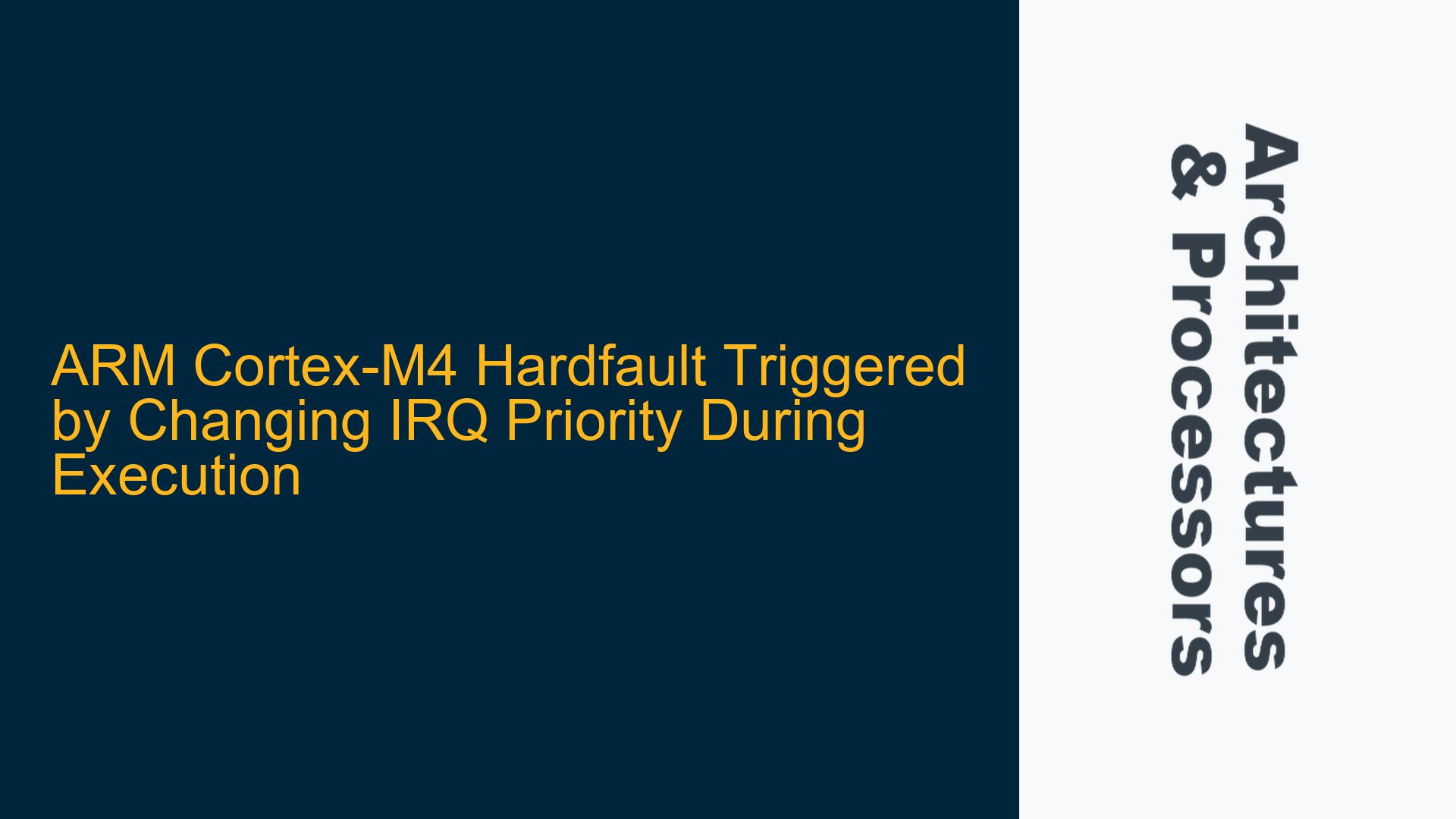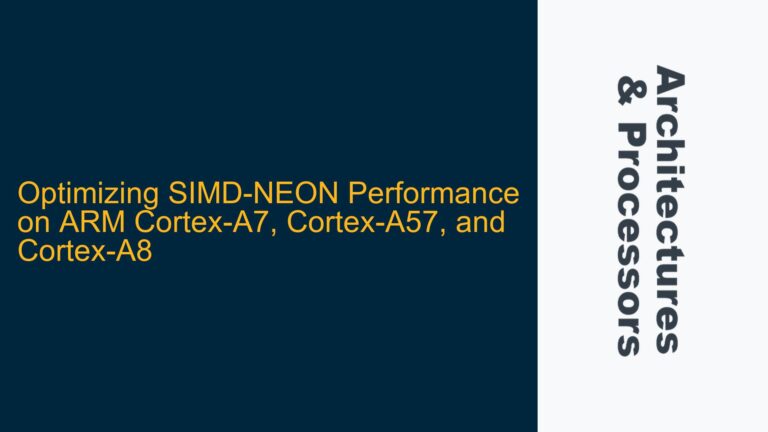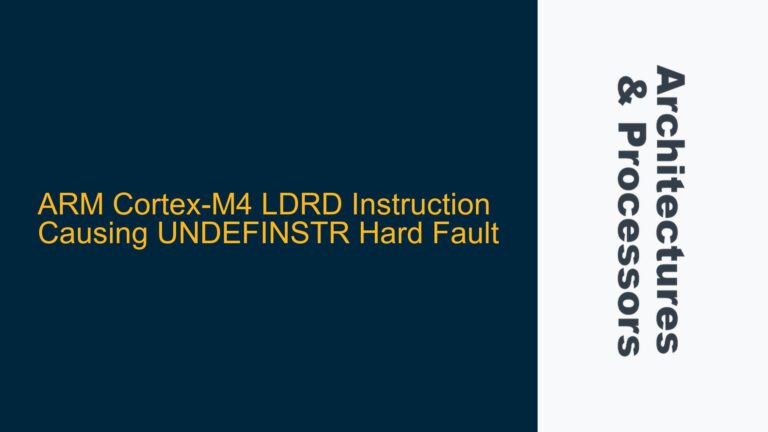ARM Cortex-M4 NVIC Priority Change During ISR Execution
The ARM Cortex-M4 microcontroller, based on the ARMv7-M architecture, is designed to handle nested interrupts efficiently through its Nested Vectored Interrupt Controller (NVIC). However, a subtle yet critical issue arises when attempting to change the priority of a currently executing Interrupt Service Routine (ISR). This issue manifests as a hardfault, which is a type of exception triggered by the processor when it encounters an unrecoverable error. The hardfault is indicated by the INVPC (Invalid PC Load) bit in the Usage Fault Status Register (UFSR), and the EXC_RETURN value of 0xFFFFFFE9 suggests that the fault occurs in a context where the Floating Point Unit (FPU) is enabled.
The core of the problem lies in the interaction between the NVIC, the processor’s exception handling mechanism, and the FPU context. When an ISR is executing, the processor is in a specific state where it has pushed certain registers onto the stack, including the FPU context if the FPU is enabled. Changing the priority of the currently executing ISR can lead to an inconsistent state in the NVIC, which in turn causes the processor to attempt an invalid program counter (PC) load, triggering the hardfault.
The hardfault does not occur at a specific program counter (PC) location, indicating that the issue is not tied to a particular line of code but rather to the overall state of the processor and the NVIC. Disabling the interrupt before changing its priority prevents the hardfault, suggesting that the act of modifying the priority while the ISR is active is the root cause of the problem.
NVIC Priority Register Corruption and FPU Context Inconsistency
The hardfault triggered by changing the priority of a running interrupt can be attributed to two primary causes: NVIC priority register corruption and FPU context inconsistency.
The NVIC in the Cortex-M4 architecture uses a set of priority registers to manage the priority levels of interrupts. These registers are memory-mapped and can be modified by software. However, the NVIC is designed under the assumption that the priority of an interrupt will not change while the interrupt is active. When the priority of a running interrupt is modified, the NVIC may enter an inconsistent state, leading to incorrect handling of the interrupt and subsequent exceptions.
The FPU context inconsistency arises because the Cortex-M4 processor automatically saves and restores the FPU context when an exception occurs, provided the FPU is enabled. The FPU context includes the FPU registers and the FPU status register. When the priority of a running interrupt is changed, the processor may attempt to restore an inconsistent FPU context, leading to an invalid PC load and triggering the hardfault.
The INVPC bit in the UFSR indicates that the processor attempted to load an invalid PC value, which is consistent with the hypothesis that the FPU context was corrupted during the priority change. The EXC_RETURN value of 0xFFFFFFE9 further confirms that the fault occurred in a context where the FPU was enabled, as this value is used by the processor to indicate that the exception return should restore the FPU context.
Implementing Safe NVIC Priority Changes and FPU Context Management
To resolve the hardfault issue triggered by changing the priority of a running interrupt, it is necessary to implement safe NVIC priority changes and proper FPU context management. The following steps outline the recommended approach to isolate and fix the problem.
First, ensure that the interrupt is disabled before modifying its priority. This can be achieved by using the NVIC_DisableIRQ function to disable the interrupt, followed by the NVIC_SetPriority function to change the priority, and then re-enabling the interrupt with NVIC_EnableIRQ. This sequence ensures that the NVIC is not in an inconsistent state when the priority is modified.
Second, manage the FPU context explicitly if the FPU is enabled. This involves saving the FPU context before changing the interrupt priority and restoring it afterward. The __get_FPSCR and __set_FPSCR functions can be used to save and restore the FPU status register, while the __get_FPEXC and __set_FPEXC functions can be used to manage the FPU exception register. Additionally, the __get_FPREG and __set_FPREG functions can be used to save and restore individual FPU registers.
Third, consider the use of memory barriers to ensure that the processor’s memory system is in a consistent state before and after modifying the NVIC priority registers. The __DSB and __ISB intrinsics can be used to insert data synchronization and instruction synchronization barriers, respectively. These barriers ensure that all memory operations are completed before proceeding and that the processor fetches the updated instructions after modifying the NVIC priority registers.
Finally, verify that the hardfault handler is correctly configured to capture and log the fault information. The hardfault handler should read the UFSR, HardFault Status Register (HFSR), and other relevant registers to provide detailed information about the cause of the fault. This information can be used to further diagnose and resolve any remaining issues.
By following these steps, the hardfault triggered by changing the priority of a running interrupt can be effectively mitigated, ensuring reliable operation of the ARM Cortex-M4 microcontroller in embedded systems applications.






